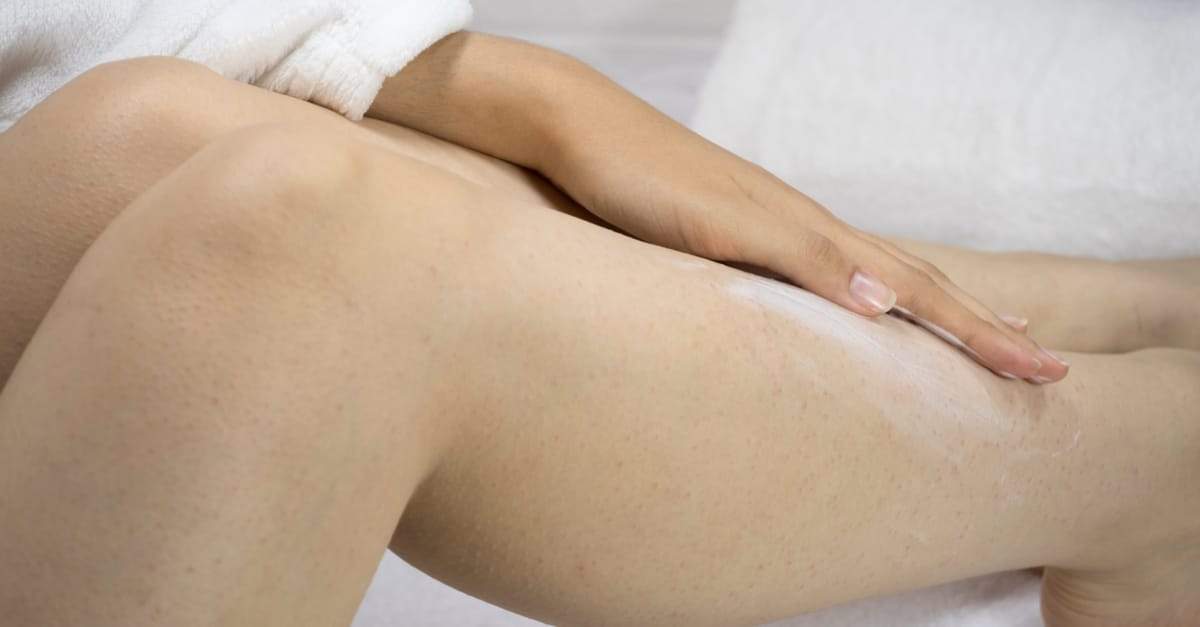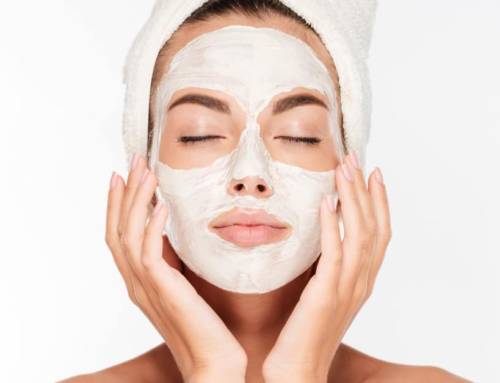Fix Strawberry Legs with Glycolic Acid
September 22, 2020

“Sometimes mistaken as dirt, these dark dots resemble the seeds on the skin of strawberries (hence the informal term “strawberry legs“) and are more noticeable on some skin types than others,” writes Gerrie Summers in Brydie. “But luckily you can prevent them from forming.”
Strawberry legs can be annoying and embarrassing to deal with, but that outstanding ingredient glycolic acid offers a fast-acting solution to sufferers.
The lowdown on “strawberry legs”?
Strawberry legs occur due to a wide variety of potential causes. Frequently, strawberry legs happen when the skin around the hair follicle darkens in response to irritation from shaving.
Or, if the telltale dots of strawberry legs are accompanied by rough skin, the problem could actually be keratosis pilaris, a condition where keratin becomes trapped in the hair follicle and a small bump on the skin occurs.
Additionally, strawberry legs may be a result of folliculitis, a bacterial or fungal infection within the hair follicle that creates a red bump on the skin.
However, the most common reason for strawberry legs? A lack of regular exfoliation.
When the pores on the legs become enlarged with trapped dirt, bacteria, and excess sebum, their appearance becomes more noticeable. If the enlarged, clogged pores then become exposed to air, the trapped detritus inside oxidizes and turns the signature dark color that make uo the “dots” of strawberry legs.
While strawberry legs are not necessarily a cause for concern, the condition is often embarrassing and unsightly for sufferers.
Luckily, regular use of glycolic acid can help remedy, and even prevent, strawberry leg outbreaks.
Chemical exfoliation solutions
Strawberry legs can be efficiently remedied with the help of regular exfoliation via glycolic acid.
Unfortunately, many with strawberry legs attempt to exfoliate with coarse, grainy, or rough manual scrubs, in a misguided attempt to “scrub away” their strawberry dots.
Instead, gentle, chemical exfoliation with glycolic acid based products is the solution to cleaning out pores and removing the black dots that signify strawberry legs.
“Exfoliate, exfoliate, exfoliate, then moisturize, moisturize, moisturize,” Dr. Patel told Well+Good. “This does not mean scrub your leg skin off, but using lotions and cleansers with alpha hydroxy acids can help loosen the top layer of the skin and smooth the pores and decrease the debris.”
Glycolic acid to the rescue
Once applied to the legs, glycolic acid is easily able to penetrate the skin cell and dissolve the gluey bonds holding the excess sebum, dirt, and dead skin cells together within the clogged pore.
By effectively acting as a cleanup crew, glycolic acid helps to sweep out debris from clogged pores and reduces and even removes the “black dots” of strawberry legs.
The solution? Exfoliate, exfoliate, exfoliate with glycolic acid!
Future prevention
Additionally, glycolic acid is the perfect ingredient to combat strawberry legs because it can help to prevent future outbreaks of the spotty skin condition.
Thanks to glycolic acid’s ability to drive new skin cells to the surface of the legs, this tiny Alpha Hydroxy Acid helps to ensure skin will exfoliate on a regular, consistent basis. The end result? Pores that are less likely to become clogged, darkened, and “dotted.”
No more strawberry dots
For consumers plagued by darkened spots on their legs, regular chemical exfoliation with glycolic acid is one of the best and easiest ways to reduce and prevent any and all future breakouts of strawberry legs.







